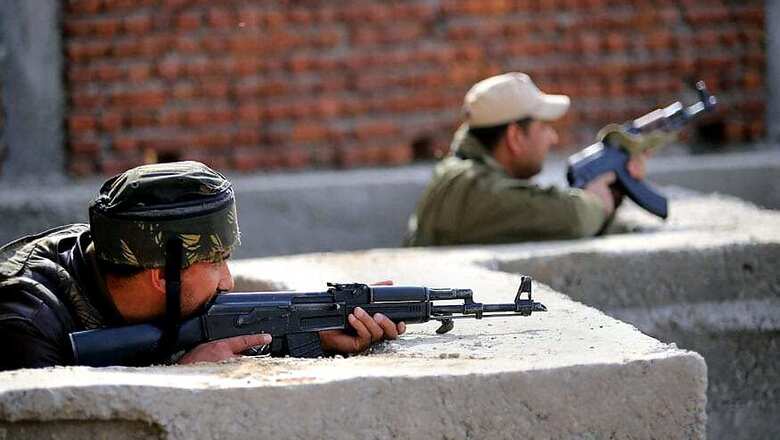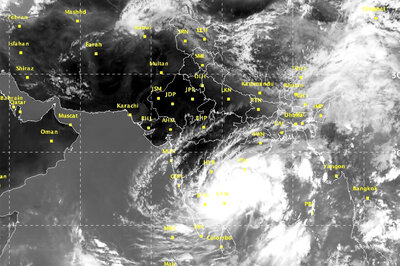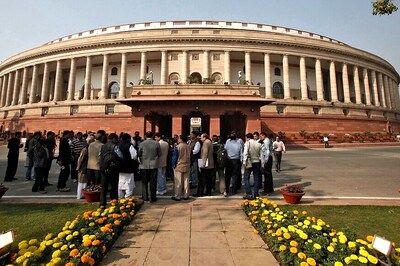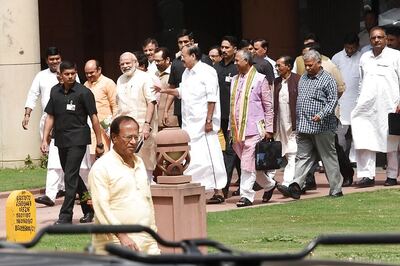
views
New Delhi: Five soldiers and a civilian have been killed in the terror strike at family quarters of army's Sunjawan camp in Jammu and the death toll is expected to climb further as the forces comb through the residential buildings after the encounter.
With the deaths, a total of 23 Indians have lost their lives in cross-border firings and terror incidents in 2018. Not for the last one decade have so many lives been lost in the state within the first two months.
It was in 2007 when under similar circumstances - heavy cross border fire and multiple terror strikes - that 43 security personnel and civilians were killed in Jammu and Kashmir in January and February.
The state has also not seen as many ceasefire violations at the beginning of the year. More than 240 ceasefire violations have been reported by the forces stationed at the border with Pakistan till now.
Pakistan-based terror groups and its troops stationed at the border have made 2018 an especially violent year, which is a serious concern in itself, and also because the present violence is unfolding right after a remarkably bloody year.
Over 1,000 incidents of violence were reported on and around the Pakistan border last year. In these, 19 security personnel lost their lives. Over 40 civilians also died in Jammu and Kashmir last year, some of them in stone pelting incidents, taking the overall civilian plus security personnel toll to 87.
This is excluding the 213 terrorists killed in various encounters. The state has not seen so many deaths and such mass scale violence in more than a decade.
While ceasefire violations are increasing on one hand - 152 in 2015, 228 in 2016, 860 in 2017 and 240 in 2018 already, Pakistan-based terror groups have also stepped up recruitment in the valley - 64 in 2015, 87 in 2016 and 126 in 2017.
The increase in cross-border firing was 400 per cent compared to the previous year and the hike in terror recruitment has been 70 per cent.
The total cadre of various terror groups in the valley - Jaish-e-Mohammad, Lashkar-e-Toiba, Hizbul Mujahideen, apart from some smaller groups - is estimated to be around 360. Around 203 local militants and 155 from Pakistan are believed to be active in the valley right now, officials said.
Pakistan has not just stepped up the offensive on the border - by attacking the Indian posts with sniper fire, mortar shells and anti-tank guided missiles (ATGM), it has also facilitated the entry of its home grown terrorists, mostly from JeM, over two dozen of whose cadre are said to have infiltrated into the country.
Forces from both India and Pakistan have gone behind enemy lines and carried out operations in this year only. Four soldiers have been killed on either side in limited scale cross-LoC operations.
And with snow melting in the higher passes of the Pir Panjal range, more infiltration and greater violence can be expected in the coming days. Last week, the forces received another huge jolt when Pakistani LeT commander Naveed Jutt, who was the deputy chief of Lashkar operations in 2014 when he was captured alive, was freed from a Srinagar hospital in a strike in which two policemen were also killed.
The fact that both Lashkar and Hizbul Mujahideen are now grouping together is also well known given that Hizb took responsibility for arranging his escape and killing policemen. Jutt was also seen with photos of Hizb's valley chief Riyaaz Naikoo in recently released photographs.
All signs in the valley point towards increasing violence in J&K for the rest of the year. This is why 2018 may be the most challenging year for New Delhi vis-a-vis J&K in over a decade.




















Comments
0 comment